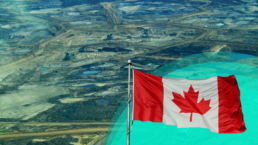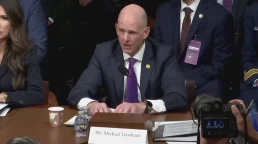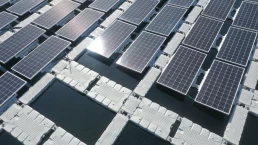Oil companies have replaced First Nation’s traditional lands with vast mines, stripping away boreal forest and wetlands.
By Nicholas Kusnetz, Undark Magazine
Fort McMurray, Canada — The first mine opened when Jean L’Hommecourt was a young girl, an open pit where an oil company had begun digging in the sandy soil for a black, viscous form of crude called bitumen.
She and her family would pass the mine in their boat when they traveled up the Athabasca River, and the fumes from its processing plant would sting their eyes and burn their throats, despite the wet cloths their mother would drape over the children’s faces.
By the time L’Hommecourt was in her 30s, oil companies had leased most of the land where she and her mother went to gather berries from the forest on long summer days or hunt moose when the leaves turned yellow and the air crisp.
Today, that same land, near her Indigenous community of Fort McKay, is surrounded by mines that have swallowed an area larger than New York City, stripping away boreal forest and muskeg and rerouting waterways.
Oil and gas companies like ExxonMobil and the Canadian giant Suncor have transformed Alberta’s tar sands — also called oil sands — into one of the world’s largest industrial developments. They have built sprawling waste ponds that leach heavy metals into groundwater, and processing plants that spew nitrogen and sulfur oxides into the air, sending a sour stench for miles.
The sands pump out more than 3 million barrels of oil per day, helping make Canada the world’s fourth-largest oil producer and the top exporter of crude to the United States. Their economic benefits are significant: Oil is the nation’s top export, and the mining and energy sector as a whole accounts for nearly a quarter of Alberta’s provincial economy. But the companies’ energy-hungry extraction has also made the oil and gas sector Canada’s largest source of greenhouse gas emissions. And despite the extreme environmental costs, and the growing need for countries to shift away from fossil fuels, the mines continue to expand, digging up nearly 500 Olympic swimming pools-worth of earth every day.
COP26, the global climate conference in Glasgow earlier this month, highlighted the persistent gap between what countries say they will do to cut emissions and what is actually needed to avoid dangerous warming.
Recent Posts
‘Total Amateur Hour’: FBI Official Says Antifa Is #1 Threat in US—But Can’t Say Where, Who, or What It Is
December 13, 2025
Take Action Now “Just a complete admission here that the entire ‘antifa’ threat narrative is totally manufactured by this administration,” said one…
Utah Leaders Are Hindering Efforts To Develop Solar Despite A Goal To Double The State’s Energy Supply
December 12, 2025
Take Action Now Utah Governor Spencer Cox signed bills that will make it more difficult and expensive to develop and produce solar energy, ending tax…
Report of the Independent Democratic Task Force on U.S. Policy Toward Israel
December 12, 2025
Take Action Now For release in connection with the winter meeting of the Democratic National Committee convening on December 11, 2025 in Los Angeles……
U.S. Realizes It Can Seize Boats After All
December 11, 2025
Take Action Now After months of extrajudicial killings in the waters off Venezuela, the Trump administration opted instead to capture an oil tanker.……





